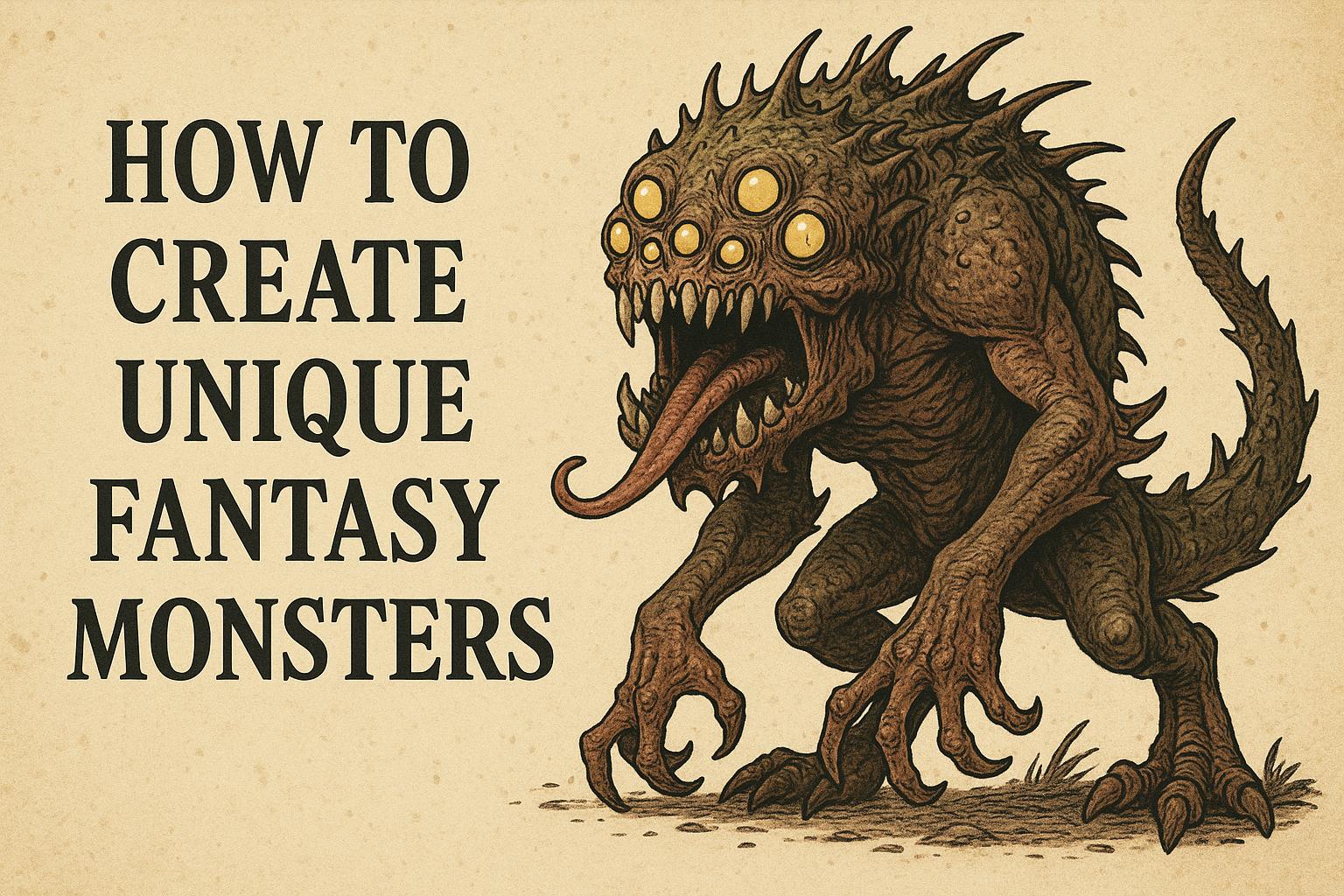How to Create Unique Fantasy Monsters

Introduction to Fantasy Monster Creation
Creating unique fantasy monsters involves a blend of imagination, world-building, and understanding of biological principles. This article explores the process of crafting creatures that stand out in any fantasy narrative.
Understanding the Role of Monsters
Fantasy monsters play several roles in storytelling. They may serve as antagonists, obstacles, allies, or symbols within the plot. Recognizing their role helps in designing their characteristics and behaviors. In order to fully grasp the purpose of a monster within a story, it’s essential to evaluate how these creatures interact with other characters and the environment. Monsters can take on many functions, such as embodying a moral lesson or simply adding tension and excitement to a storyline.
Drawing Inspiration from Various Sources
The process of creating monsters often starts with inspiration. This can be drawn from folklore, mythology, nature, and existing literature. It’s beneficial to analyze why certain creatures from these sources resonate with audiences. Identifying the elements that make these monsters appealing or terrifying can aid in crafting new ones that evoke similar emotions from readers.
Exploration of Folklore and Mythology
By researching global myths and legends, creators can find a treasure trove of monster archetypes. For instance, the kraken and werewolves have origins in Nordic tales and medieval Europe respectively. Such creatures can be reimagined to fit new settings. The depth and variety found in folklore offer endless options for adaptation, allowing authors to tailor these beings to fit the specific needs of their stories.
Natural World as a Template
Nature offers a diverse set of biological traits that can be recombined. Consider the camouflage abilities of certain animals or the regenerative properties of others. These traits can be exaggerated or combined to form the basis of a new monster. By mimicking natural adaptations, authors can create realistic creatures with believable behaviors, offering a sense of familiarity while maintaining an air of mystique.
Designing Unique Physiology and Abilities
The anatomical design of a monster should suit its environment and role in the narrative. Consider size, locomotion, sensory skills, and defenses. The more closely a monster’s physical form aligns with its environmental and narrative role, the more convincing it will be to the audience.
Size and Shape: A creature’s scale can denote its power or fragility. Large monsters might dominate a scene with their brute strength, while smaller creatures may rely on cunning and speed.
Movement: Integrate unique forms of locomotion, such as flying with wings made of light. Consider how a creature’s ability to move impacts its interaction with the environment and other characters.
Sensory Abilities: Enhanced senses or extrasensory perceptions can make a creature more formidable. These abilities might allow a monster to detect threats or prey from a distance, adding to its effectiveness within a storyline.
Defensive Traits: Armor or camouflage may align with its habitat and lifestyle. Such traits help establish a creature’s place in the world and can provide unexpected challenges to protagonists.
Integrating Monsters into the Narrative
Every monster must have a purpose that aligns with the story. This integration involves both its role and impact within the plot. To maximize a monster’s effectiveness, it must seamlessly blend into the narrative, enriching the story rather than detracting from it.
Ecology and Behavior
Define the habitat and lifestyle of the monster. Consider the ecological niche it occupies and its interactions with other creatures within its environment. These elements help in creating believable and interesting behaviors. The interactions of monsters with their surroundings can lead to compelling plot developments, further immersing the reader in the story.
Symbolism and Thematic Relevance
Monsters often symbolize larger themes within a story. They can represent chaos, fear, or redemption. Aligning a creature’s traits with these themes can enhance its significance. Through their symbolism, monsters can provide insight into a story’s deeper meanings and values, adding an additional layer of complexity to the narrative.
Creating Lore and Background
In-depth lore provides context and enhances the realism of a fantasy world. Build history and myths around the monster to give depth and intrigue. When readers are presented with a well-crafted backstory, they gain a fuller understanding of the creature and its place within the world.
Origins and Evolution
Establish where the creature came from and how it evolved. This could involve magical origins, cross-breeding, or adaptations over centuries. Imagining a creature’s history allows writers to explore its transformation over time, explaining how it came to be the entity it is in the current narrative.
Connection to World Events
Tie the creature’s existence to significant events in the world. Perhaps it was created during a magical cataclysm or was the guardian of an ancient civilization. Monsters linked to major events can serve as crucial plot devices, their existence and actions influencing the direction of the story.
Conclusion
Crafting unique fantasy monsters requires creativity and an understanding of various storytelling elements. By drawing from existing knowledge and adding imaginative twists, creators can develop creatures that enrich their narratives and captivate audiences. Effective monsters enhance the depth and excitement of a fantasy world, making it more enthralling for readers.
Comments are closed.
Comments on 'How to Create Unique Fantasy Monsters' (0)
Comments Feed